Compositional Characterization of Nitrogen Compounds in Changqing Crude Oil and Its Heavy Distillates
2019-01-18LiXiaohuiYuanHuiyingYinJuanjuanWuBencheng
Li Xiaohui; Yuan Huiying; Yin Juanjuan; Wu Bencheng
(1. College of Chemistry and Chemical Engineering, Xi’an Shiyou University, Xi’an 710065;2. School of Information and Technology, Northwest University, Xi’an 710127; 3. State Key Laboratory of Heavy Oil Processing, College of Chemical Engineering, China University of Petroleum, Beijing 102249)
Abstract: The nitrogen-containing compounds in Changqing crude oil, its atmospheric residue (AR), and vacuum reside (VR) were characterized by negative and positive ion electrospray ionization (ESI) Fourier transform ion cyclotron resonance mass spectrometry (FT-ICR MS). The heteroatom compounds (N1, N2, N1O1, O1, and O2 class species) could be identified by the negative ESI analysis, while the positive mode could only detect the N1, N2, and N1O1 class species. Among them, the N1 class species were found to be predominant in crude oil, as conf irmed by either negative or positive ESI analyses, which were similar in composition to AR and VR. These compounds with higher abundance were characterized by double bond equivalent (DBE) values and carbon numbers. The composition of these compounds in crude oil and its AR as well as VR was correlated with their different boiling range, DBE values and carbon numbers. The negative ESI analysis showed that the abundant N1 class species in crude oil and AR were centered at a DBE value of 12, and these species were likely benzocarbazoles, while the N1 class species with the DBE value ranging from 13 to 16 having more complicated molecular structures were dominant in VR. And the positive ESI analysis gave the information of the abundant N1 class species in crude oil, AR, and VR having the DBE values in the range of 10, 9―11, and 10―16, respectively, which were likely the compounds with the core of quinoline and benzoquinoline. The analysis conf irmed that the distillation process in refinery preferentially removed the low DBE value and low molecular N-class species and brought them into the light and medium distillates, while those N-class species having a high molecular condensation in the molecules with large carbon number remained in the residual oil and could continually affect the downstream oil ref ining process.
Key words: crude oil; atmospheric residue (AR); vacuum reside (VR); nitrogen compound; electrospray ionization (ESI); Fourier transform ion cyclotron resonance mass spectrometry (FT-ICR MS)
1 Introduction
Nitrogen-containing compounds in petroleum include both neutral and basic nitrogen compounds. Neutral nitrogen compounds accounting for less than 30% of all organic nitrogen compounds include carbazoles, indoles, pyrroles, etc.Basic nitrogen compounds include, for example, pyridine and quinoline derivatives[1]. Basic nitrogen compounds can lead to catalyst deactivation in refining catalytic processes and cause fuel instability during transportation or storage[2]. Nitrogen compounds tend to exist in the higher boiling fractions and residues[3]. Among the refinery product streams, vacuum gas oil (VGO) is known to contain a considerable percentage of the total nitrogen compounds, which is only exceeded by vacuum residue (VR).
Gas chromatography (GC) and GC coupled with mass spectrometry (GC-MS) are commonly used to characterize the nitrogen compounds in crude oil and its distillates. However, GC-MS is not capable of analyzing samples that contain higher molecular nitrogen compounds because of their low volatility[4-5]. The results of elemental analysis of many crude oils show that 90% of nitrogen species are present in vacuum residues[6-7], most of which cannot be identified by GC-MS. Hence, the nitrogen compounds identified by GC-MS represent only a fraction of total nitrogen species of those found in crude oils.
Recently, the Fourier transform ion cyclotron resonance mass spectrometry (FT-ICR MS) with an ultrahigh mass resolution and mass accuracy has been successfully used to analyze trace polar compounds found in petroleum fractions at the molecular level. Positive ion ESI can selectively ionize the heteroatom species, such as basic nitrogen compounds, and negative ion ESI can be used to analyze acids and neutral nitrogen compounds[8-9]. Smith, et al.[10]analyzed the polar heteroatom species including basic and neutral nitrogen compounds in eight heavy vacuum gas oil (HVGO) distillation fractions with different boiling ranges of Athabasca bitumen by positive and negative mode ESI FT-ICR MS. Liu, et al.[3]has characterized the composition of basic nitrogen compounds in the hydrocracked products of Liaohe AR including VGOs by positive ion ESI coupled with FTICR MS.
Basic and neutral nitrogen species found in petroleum samples have also been extensively characterized by positive and negative ion ESI FT-ICR MS, respectively. In the present work, the classes and structures of basic nitrogen species in Changqing crude oil and the corresponding AR and VR collected from a refinery in China were characterized and analyzed by the 9.4T ESI FT-ICR MS comprehensively. The detailed information about compositional changes of nitrogen compounds at molecular level in atmospheric and vacuum distillation process was determined for better understanding of the migration and transfer of nitrogen species in distillation process at the oil refinery.
2 Experimental
2.1 Sample preparation
The Changqing crude oil sample and its AR and VR samples used in the experiments were collected from the PetroChina Corporation, with their physicochemical properties presented in Table 1.
The AR and VR samples from the bottom of atmospheric and vacuum distillation unit have their boiling ranges of >350 °C and >520 °C, respectively. As shown in Table 1, the crude oil is rich in saturates (70.60%) and aromatics (26.49%), whereas the resins and asphaltene contents are relatively small (2.31% and 0.60%). The high wax content (12.86%) results in a high freezing point (20 °C). The nitrogen content of crude oil is 0.21%. During the crude oil distillation process, a considerable amount of nitrogen compounds is concentrated in the heavier or bottom fractions such as AR, vacuum gas oils (VGOs), and VR.
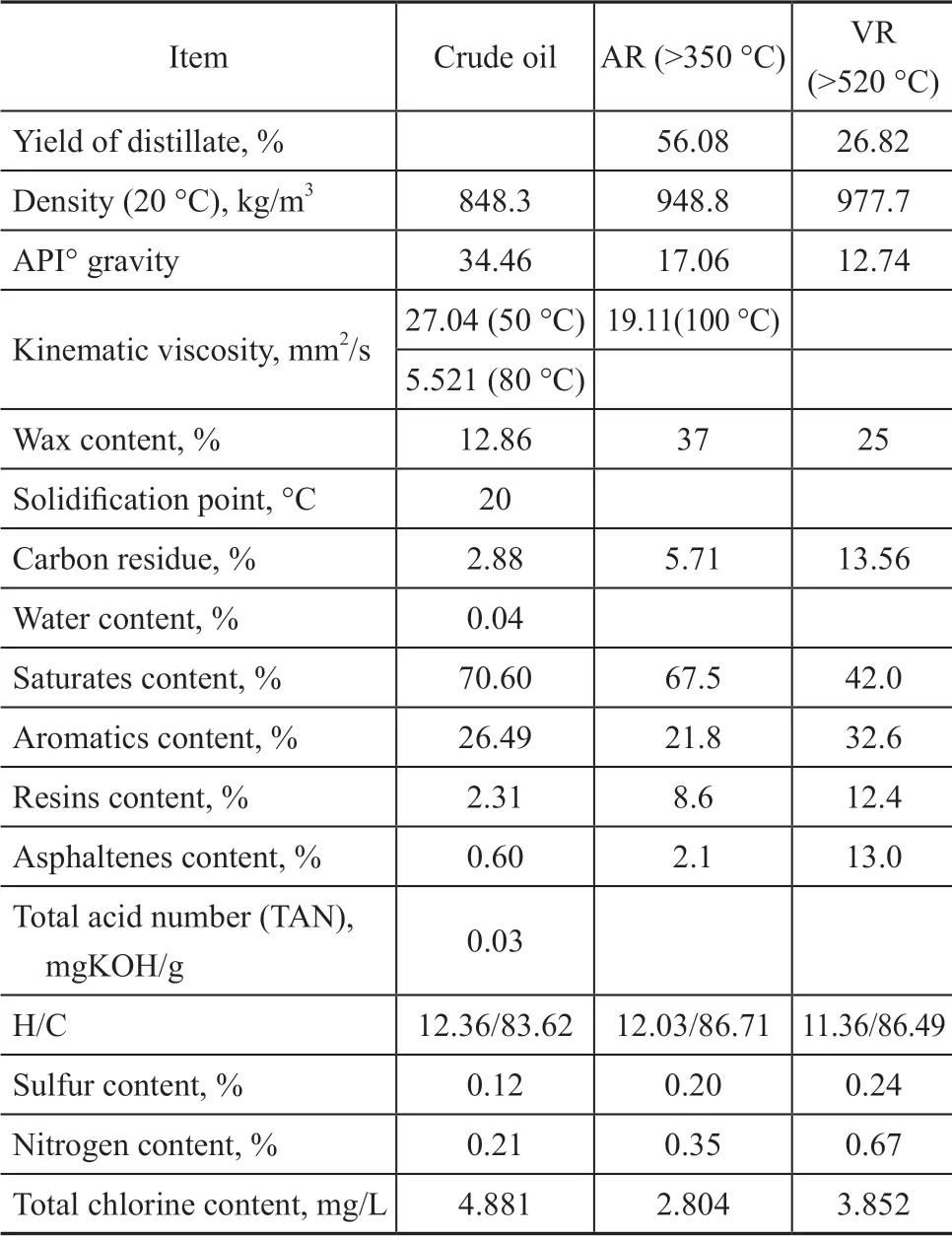
Table 1 Properties of Changqing crude oil and its AR and VR
2.2 ESI FT-ICR MS analysis
The method for sample preparation prior to the analysis of nitrogen-containing species in crude oil and its AR and VR samples by the ESI FT-ICR MS had been previously reported[11-15].
2.3 Mass calibration and data analysis
The obtained mass spectra were calibrated internally according to the most abundant homologous series of N-containing compounds. Peaks with a relative abundance of greater than 6 times the standard deviation of the baseline noise level were exported to a spreadsheet. Data analysis was implemented by using custom software, which had been described in some references[11-12].
3 Results and Discussion
3.1 Heteroatom class distribution in Changqing crude oil and its AR and VR
The three ESI(-)-FT-ICR MS spectrums and three ESI(+)-FT-ICR MS spectrums with am/zrange covering from 200 to 800 were observed. An obvious difference of the ESI FT-ICR mass spectra between positive ion and negative ion was that the basic species were in higherm/zrange as compared to those of neutral ones.
The average masses of crude oil, its AR, and VR shown in ESI(-)-FT-ICR MS spectrums were calculated as with am/zof 366, 373, and 423, respectively, while for the positive mode, the average masses were centered at am/zof 411, 429, and 474, respectively (Table 2). The average mass is calculated using the following equation[16]:

whereMiis the mass of peaki, andIiis the relative intensity of peaki.
Also, the average carbon number and average DBE value can be calculated using the following equations (2) and (3), respectively:

where (CN)iis the carbon number of mass peaki, (DBE)iis the DBE value of mass peaki, andIiis the relative intensity of mass peaki.
So the basic class species have a higher average molecular mass compared to the neutral one, which is consistent with the result reported by Zhu, et al.[4]It is worth mentioning that with an increasing boiling point, the molecular weight distribution broadened and shifted to higherm/zvalues. The abundant peaks with masses in the molecular weight range of 200―800 Da indicated that the dominant compounds are N-class species. The data confirmed that distillation could preferentially remove low molecular N-class species and bring them into light distillates. However, residual oils like AR or VR containing high concentrations of large molecular nitrogen compounds could cause rapid catalyst deactivation in downstream catalytic processes. Hence, more comprehensive and detailed characterization of the composition of nitrogen compounds that are present in AR and VR can be useful in the design and development of better catalysts for processing heavy feedstocks.
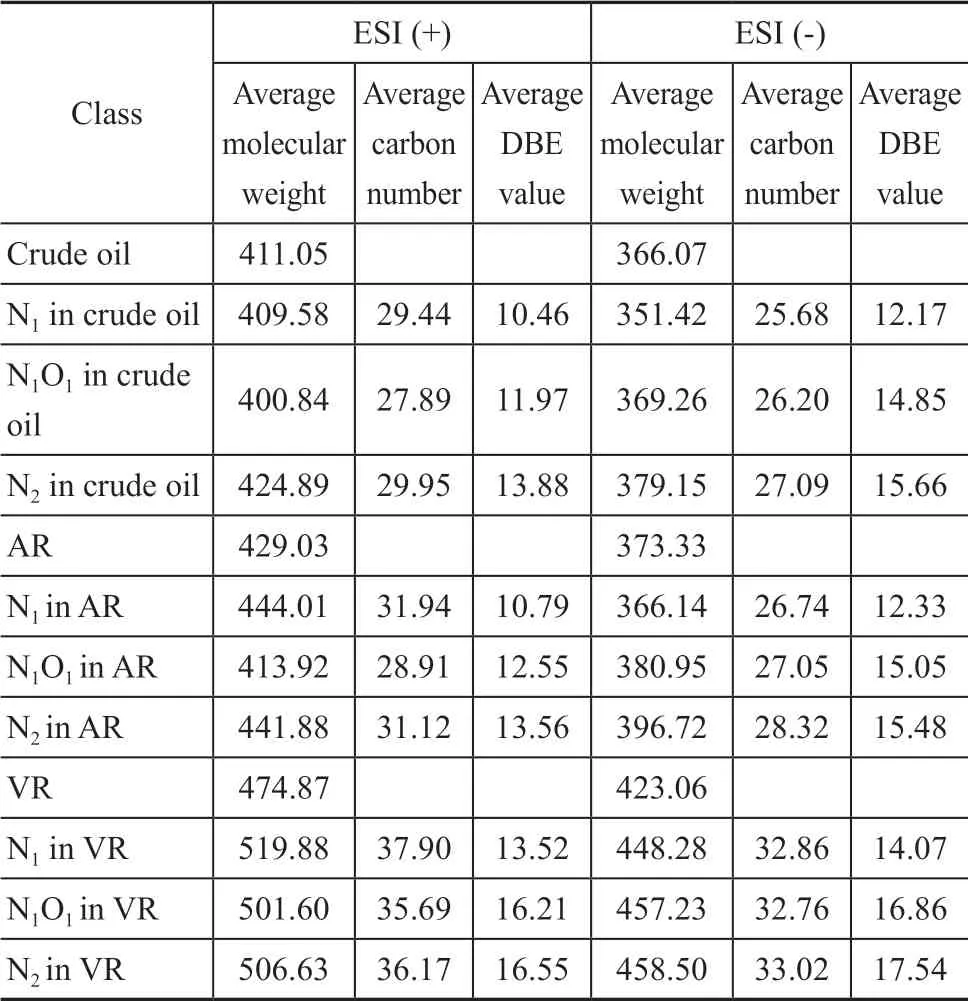
Table 2 Average molecular weight, carbon number, and DBE value of the identified nitrogen class species
The class species N1and N2denote the compounds with one and two nitrogen atoms in the molecule respectively, and the class N1O1denotes compounds with one nitrogen atom and one oxygen atom in the molecule. Nitrogen atoms in nitrogen compounds tend to exist in ring structures, and there is almost no aliphatic nitrogen compound in petroleum[3].
Besides the nitrogen compounds, the O1and O2class species were also identified from the three oil samples by negative ion mass spectra, while these oxygen compounds were not found by positive ion mass spectra. In the three oil samples, the N1class was the predominant one, followed by O1class identified by the negative mode. With an increasing boiling range, the relative abundance of O1class species decreased, while the N1O1and N2class species increased.
Judging from the positive mode, the N1O1class species take the second place in crude oil sample, which is similar to the results reported by other authors[3,5,17]. As regards the AR and VR, the relative abundance of N2class species increased or even gradually exceeded the N1O1class species with the increase in the boiling range of oil samples, indicating that the complexity of the basic nitrogen compounds increased.
The elemental composition, as well as the ionization method, is used to determine the possible functionalities of observed classes. The N1class species observed by the negative ion ESI must contain the acidic hydrogen, which is present only in a pyrrole derivative, while the N1class species observed by the positive ion ESI never contain an acidic hydrogen in a pyridine derivative.
These results showed that atmospheric and vacuum distillation processes cannot reduce the relative abundance of N1class species, because the N1class species are refractory to distillation function which can lead to a large amount of N1class species remaining in the residual oil, which is consistent with earlier findings[18].
3.2 Mass distribution and the abundance of N1 class species
The broadband ESI FT-ICR mass spectra (which are not presented here) of the identified N1class species show that the most abundant peaks of basic (or neutral) N1class compounds in crude oil, AR, and VR were identified atm/zof 348 (286), 348 (286), and 484 (322), respectively. Moreover, the average molecular weight of basic N1class compounds in crude oil, AR, and VR was 410, 444, and 520, respectively, and that of neutral N1class compounds was 351, 366, and 448, respectively (Table 2). It is demonstrated that the molecular weight of N1compounds increased with an increasing boiling point of the oil samples, which was in good agreement with the whole ESI FT-ICR MS results. This is because the N1compounds with a relatively lower molecular weight easily go into the light and medium sub-fractions through separation via distillation in oil refining processes, thus shifting the average molecular mass of N1class in heavy petroleum fraction to higher level. In addition, it was also revealed that the molecular weight of neutral N1class species is distributed in lower molecular weight region as compared to basic N1class species.
3.3 The number of identified class species
There are total 1285, 1762, and 2448 kinds of N-containing species that were identified from crude oil, AR, and VR by ESI (±) FT-ICR MS, respectively, including the basic and neutral N classes. More detailed information on number counting of identified nitrogen species is listed in Table 3. It can be found that for the three oil samples, the total number of nitrogen species identified from VR by ESI FT-ICR MS is the greatest one, followed by AR, and the total number of nitrogen species identified from crude oil is the least one, with both verified by the positive mode and the negative mode. This is because AR is one of the fractions of crude oil, while VR is a sub-distillate of AR. Since the crude oil is a highly complex matrix containing all kinds of hydrocarbons and non-hydrocarbons, the complexity of its composition is higher than that of AR and VR, leading to troubles in detecting some nitrogen species because of the masking effect. On the other hand, some intense anion peaks were higher than other ones, representing the phenomenon of suppression effects, where several other factors other than the analyte concentration could affect the ESI response, such as the ionization efficiency and solvation energy of the analyte[1]. In addition, for each oil sample, the number of the identified N1class species is the predominate one, which can account for 82%, 80%, and 73% of the total number of identified nitrogen compounds in crude oil, AR, and VR, respectively. It can be observed that from crude oil, AR, and VR despite the increase of total number of the identified nitrogen compounds, the percentage of N1class species was reduced, and meanwhile, the proportion of N1O1and N2class species increased, attesting to the more complex molecular composition in heavy petroleum. Furthermore, by comparing the identified basic and neutral class species in each oil sample basically and approximately, the number of identified basic nitrogen compounds was more than the neutral ones. As regards the in-depth analysis, as already mentioned in Section I that neutral nitrogen compounds which account for less than 30% of all organic nitrogen compounds in petroleum, the ratio of neutral nitrogen to basic nitrogen is 7:3, however, Table 3 shows this ratio is 1:1.19 (crude oil), 1:1.22 (AR), and 1:1 (VR), respectively, indicating that the number of the identified basic nitrogen compounds has no absolute predominance over the neutral nitrogen compounds in the number of species. This could be attributed to the difference of ionization efficiency for the two kinds of mononitrogencontaining compounds, since the complexity of ionization efficiency is usually very difficult to be eliminated. This analytical result may imply that the neutral nitrogen compounds have a better ESI response as compared to the basic ones. Wu, et al.[19]pointed out that the quantitative determination of all species identified thereby is not currently possible owing to the variation in ionization efficiency.
To examine the molecular composition of various class species in oil samples, iso-abundance dot-size coded plots are constructed by correlating DBE and carbon number distribution, which can provide the detailed compositional data of the species[4].
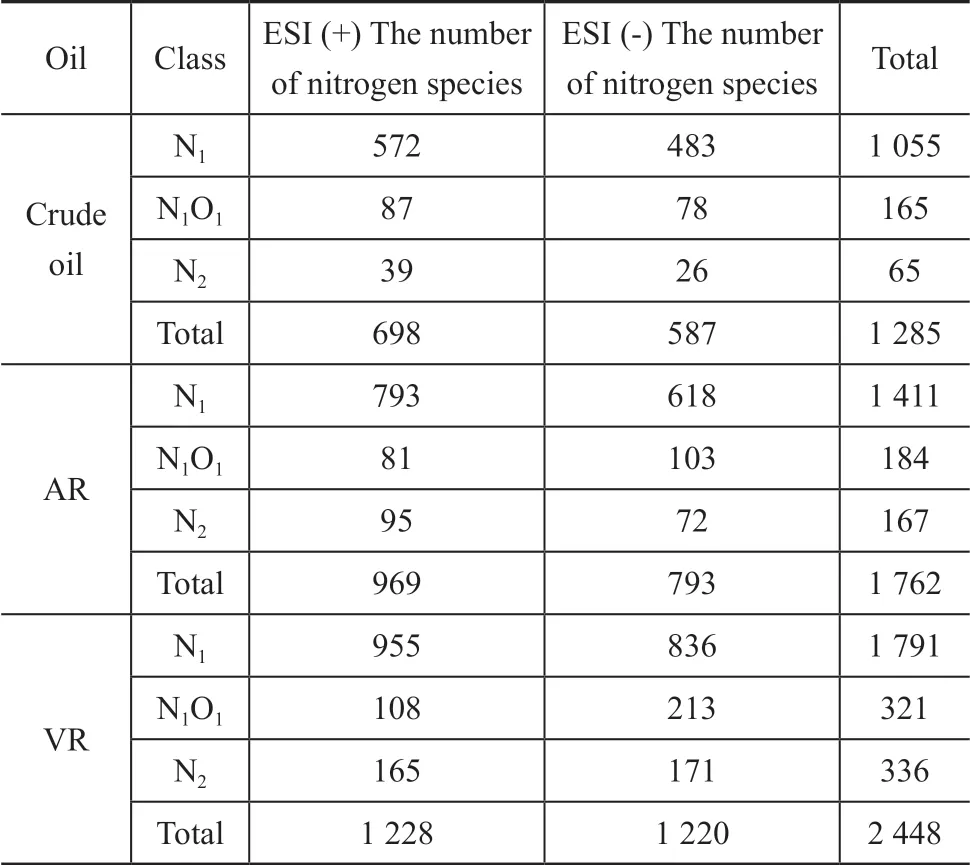
Table 3 The number counting of identified nitrogen species
3.4 DBE versus carbon number for N1 class species
Figure 1 shows plots of DBE versus carbon number of the N1class species in Changqing crude oil and its AR and VR. Generally, the carbon number and DBE value of all the identified N1compounds are continuously distributed in the range of 15―54 and 4―26, respectively. The average carbon numbers of crude oil and its AR and VR were 26 (29), 27 (32) and 33 (38), respectively, and the average DBE values were 12 (10), 12 (11) and 14 (13), respectively (Table 2). The DBE and carbon number of N1class species shifted to higher values with the increase in boiling point. The relative abundance of the N1class species increased and then decreased with the increase in carbon number.
The abundant neutral N1species in crude oil, AR and VR have a DBE value of 12, 12, and 13―16, respectively, and their carbon number is centered at 18―23, 19―25, and 23―33, respectively. The possible core structure of these compounds could be benzocarbazoles, and more complicated molecular structures are found in VR. Meanwhile, the DBE value of abundant basic N1in crude oil, AR and VR lies in 10, 9―11, and 10―16, respectively, and their carbon number spreads over 23―30, 24―35, and 30-43, respectively. The main basic N1compounds in oil and its fractions are pyridine derivatives, quinoline derivatives, and acridine derivatives[3]. So, these species were likely the compounds with the core of quinoline and benzoquinoline, with their possible structures shown in Figure 1. Species with a DBE value of 4―5 correspond to the derivatives of pyridines and tetrahydroquinolines with long alky side chains[20].
In addition, the DBE and carbon number distribution of basic N1class species is different from those of neutral N1. Upon comparing the basic and neutral N1class species in detail, we observed that the basic N1class species seemed to have a higher carbon number but a lower DBE value, attesting to a low molecular condensation in large carbon number molecules. However, the neutral N1class species have a lower carbon number but a higher DBE value. It was also observed that the DBE value and carbon number of basic N1seemed to be distributed in a wider range in comparison to the neutral N1species. Generally, the DBE and carbon number of N1compounds exhibit a shift to higher values after distillation, indicating that the lower molecular N1species with lower degree of molecular condensation are preferentially transferred into light and medium distillates during the distillation process.
3.5 DBE versus carbon number for N1O1 and N2 class species
The results suggest that most of the N1O1and N2species have high aromaticity, and those species that have more complicated molecular structures are dominant. The DBE value of N1O1and N2compounds lies between 9 and 24, suggesting that the molecular structures of individual species are significantly different.
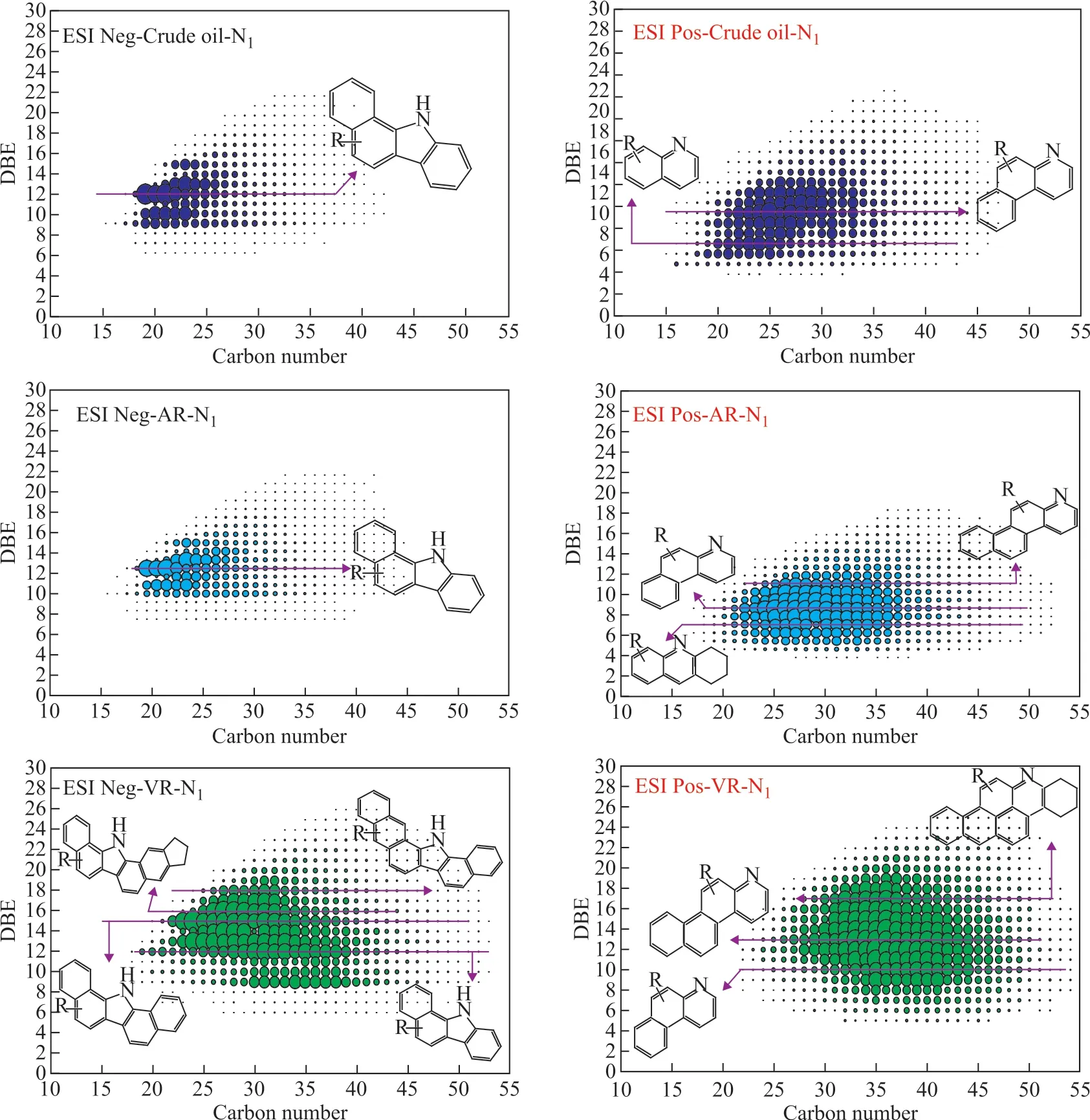
Figure 1 Plots of DBE as a function of the carbon number for N1 class species from ESI FT-ICR mass spectra of Changqing crude oil, its AR and VR
As for the identified basic N1O1species, they shifted the distribution toward higher mass from crude oil to AR and VR. Overall, the carbon number and DBE value of all the identified N1O1compounds spread over 18―45 and 9-24, respectively. The basic N1O1class species are likely comprised of a pyridine ring and a furan ring or a double bond of carbon and oxygen[5]. The predominant neutral N1O1species in crude oil, AR, and VR have a higher DBE and lower carbon number in comparison with the basic N1O1class species, which is in good agreement with the fact reflected by the average data in Table 2, indicating a high molecular condensation in small carbon number molecules, which is resulted from combining pyrrole (or higher benzologs) with a furan instead of hydroxyl functionalities. Moreover, through detailed analysis, it can be found that the basic N1O1class species have higher DBE but lower carbon number values as compared to the basic N1class species. Hence the neutral N1O1class species have higher DBE and high carbon number values as compared to the neutral N1class species.
The analysis revealed that the basic N2class species seemed to have a lower DBE and higher carbon number as compared to the neutral N2class species. Actually, the operating conditions of FT-ICR MS used in this work caused a large mass discrimination at the lower mass ranges. This is likely a result of limitations of ion transfer system of FT-ICR MS. The N2class species are comprised of both basic and neutral nitrogen atoms, which can be detected by positive and negative ion ESI analyses, and these species are likely amphoteric molecules with pyridine and pyrrole core structures[4]. As for the basic N2class species, the data showed that at least one of the two N atoms in pyridine form was detected by the positive ion spectrum, whereas the other N atom was in the form of either pyridine or pyrrole[20]. As regards the neutral N2class species, they could contain two N atoms that were all in the pyrrole form detected by the negative ion spectrum, or one N atom was in the pyrrole form plus another one that was in the pyridine form.
Generally, the N1class species are the predominant nitrogen compounds. Although N1O1and N2class species showed a much lower relative abundance, they existed over a wide and high range of DBE values, indicating to various degrees of condensed aromaticity with complex structures. And there are almost no nitrogen compounds with a small number of carbons and low saturation degree. For an intuitionistic and convenient knowledge relating to the general panorama of distribution including all identified nitrogen species, we have depicted Figure 2 to sum up all the above discrete information, from which it can visually distinguish, f ind out, compare and analyze each distribution range and boundary of N1, N1O1, and N2class species. Moreover, it can clearly reflect the possibility of appearing at a certain position. The carbon numbers and DBE values of the identified nitrogen species in each class are confined in the rectangle with a certain position and size. In each rectangular range, the carbon number and DBE value of the highest and lowest relative abundance of this class species, and the point having average carbon number and DBE value have been plotted. From Figure 2, we can see that the identified nitrogen species in the three oil samples tend to appear in the range having a large point density, i.e., with an average carbon number in the range of 23―35 (18―33) and a DBE value in the range of 9―18 (12―19) for basic (neutral) nitrogen compounds.

Figure 2 The overall appearance of the general range, distribution and position of carbon number and DBE values for the identified nitrogen species
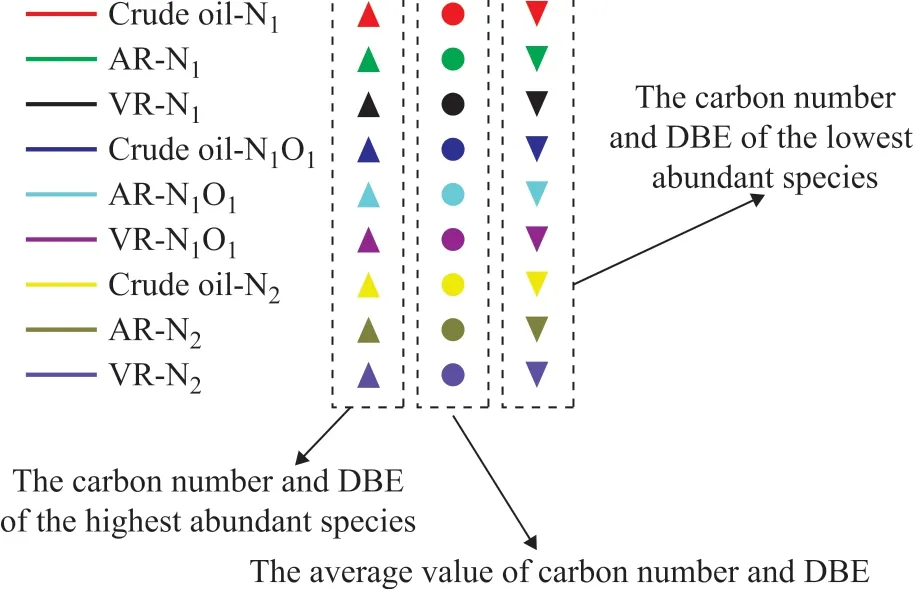
4 Conclusions
Detailed molecular compositions of basic and neutral nitrogen compounds in Changqing crude oil, and its corresponding AR and VR were characterized by the powerful positive ion and negative ion ESI FT-ICR MS, respectively. The analysis showed that the basic and neutral nitrogen compounds were characterized by the N1, N1O1, and N2class species, in which the N1class species are the most abundant ones accounting for more than 90% of the total abundance of all nitrogen-containing compounds. The O1and O2class species were clearly identified by the negative mode, but were not detected by the positive mode. With an increasing boiling range, the carbon number, average molecular weight and DBE of the N1class species shifted to high values. The basic nitrogen species have a higher average molecular mass as compared to the neutral one. An obvious difference between the basic and the neutral N1class species is that the basic N1species seem to be in a low molecular condensation degree in large carbon number molecules, whereas the neutral N1species tend to be in a higher molecular condensation degree in small carbon number molecules. Negligible amounts of N1O1and N2class species were also subjected to detailed analysis: the basic N1O1class species have higher DBE but lower carbon number values compared to the basic N1class species, whereas the neutral N1O1class species have higher DBE and high carbon number values compared to the neutral N1compounds. The basic N2class species have higher DBE and lower carbon number values compared to the basic N1class species, while for the neutral N2class species, both of their DBE and carbon number values are all higher than the neutral N1class species. The results showed that during the atmospheric and vacuum distillation process, the relative abundance of N1class species cannot be reduced, while only the N1class species with lower molecular mass and lower molecular condensation are preferentially transferred into light and medium distillates, so a considerable high concentration of large molecular N1class species still remains in the residual oil, which can cause rapid catalyst deactivation in downstream catalytic processes. Hence, this detailed comprehensive analytical study on the composition of high concentrations of nitrogen compounds existing in AR and VR can be useful in the design and development of better catalysts for processing heavy feedstocks.
Acknowledgment:This work is supported by the Young Talent Fund of University Association for Science and Technoloqy in Shaanxi, China (No. 20160222). The PetroChina Innovation Foundation (No. 2016D-5007-0404), and the Natural Science Basic Research Plan in Shaanxi Province of China (No. 2017JQ2034). And the authors thank all the assistance from members of the State Key Laboratory of Heavy Oil Processing, China University of Petroleum in Beijing.
杂志排行
中国炼油与石油化工的其它文章
- Environmentally-Friendly Catalytic Oxidation of Cyclohexanone with 30% H2O2 Solution: A Comparison Study between Hollow Titanium Silicate and Dealuminated HBEA Zeolites
- A Study on the Coking Sites of γ-Alumina Surface Using 1-Methylnaphthalene as the Model Reactant
- Selective Hydrogenation of Butyne-1,4-diol to Butane-1,4-diol over Ni/Al2O3-SiO2 Catalysts
- China Will Increase Ethylene Production Capacity Totaling Around 15 Mt/a by 2025
- Boosted Biodegradability and Tribological Properties of Mineral Base Oil by Methyl Diethanolamine Fatty Acid Esters
- Catalytic Hydrogenation Performance of Methyl Isobutyl Ketone over Ni/γ-Al2O3 Catalysts
